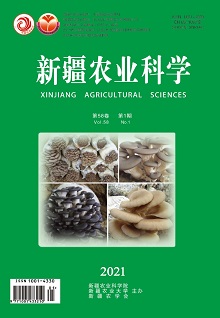|
|
Investigation of Staphylococcus aureus Pollution and Virulence Gene Detection in Xinjiang Cattle and Sheep Industry Chain
XU Lan, LIU Yingyu, MAI Duo, ZHU Mingyue, JIANG Jindou, LU Wei, ZHU Menghan, ZHENG Xiaofeng, PENG Bin
2021, 58(1):
182-189.
DOI: 10.6048/j.issn.1001-4330.2021.01.022
【Objective】 Staphylococcus aureus is one of the more common pathogenic bacteria in nature. Methicillin-resistant Staphylococcus aureus is epidemic and spread worldwide, and has quickly become an important pathogen in hospital and community-acquired infections. The purpose of this study is to understand the contamination status of Staphylococcus aureus and methicillin-resistant staphylococcus aureus from cattle and sheep in Urumqi and surrounding areas and to detect common virulence genes. 【Methods】 752 samples from cattle farms and cattle and sheep slaughterhouses in Urumqi and surrounding areas (faecal samples, milking parlor tool swabs, carcass swabs, slaughter tool swabs, etc.) were collected and Staphylococcus aureus was performed using national standard methods: isolation and identification of methicillin-resistant Staphylococcus aureus, and 10 common virulence genes detected were: sea, seb, sec, fnbA, fnbB, hla, hlb, clfa, pvl, tst. 【Result】 A total of 26 strains of Staphylococcus aureus were isolated with an isolation rate of 3.46%. Among them, the isolation rates of dairy farms, cattle slaughterhouses and sheep slaughterhouses were 4.39%, 1.13% and 3.72%, respectively. Of these, 8 strains were methicillin-resistant Staphylococcus aureus, accounting for 30.77% of the detection rate. The detection rates of virulence genessea, seb, sec, fnbA, fnbB, hla, hlb, clfa, pvl, and tst were 11.54%, 19.23%, 3.85%, 3.85%, 23.08%, 100%, 53.85%, 100%, 0, 15.38%, with the highest detection rate of clfa and hla.。【Conclusion】 Staphylococcus aureus is present in Xinjiang dairy farms and cattle and sheep slaughterhouses. Among them, MRSA pollution is serious in dairy farms. Staphylococcus aureus mainly encodes two virulence genes, hla and clfa.
|

